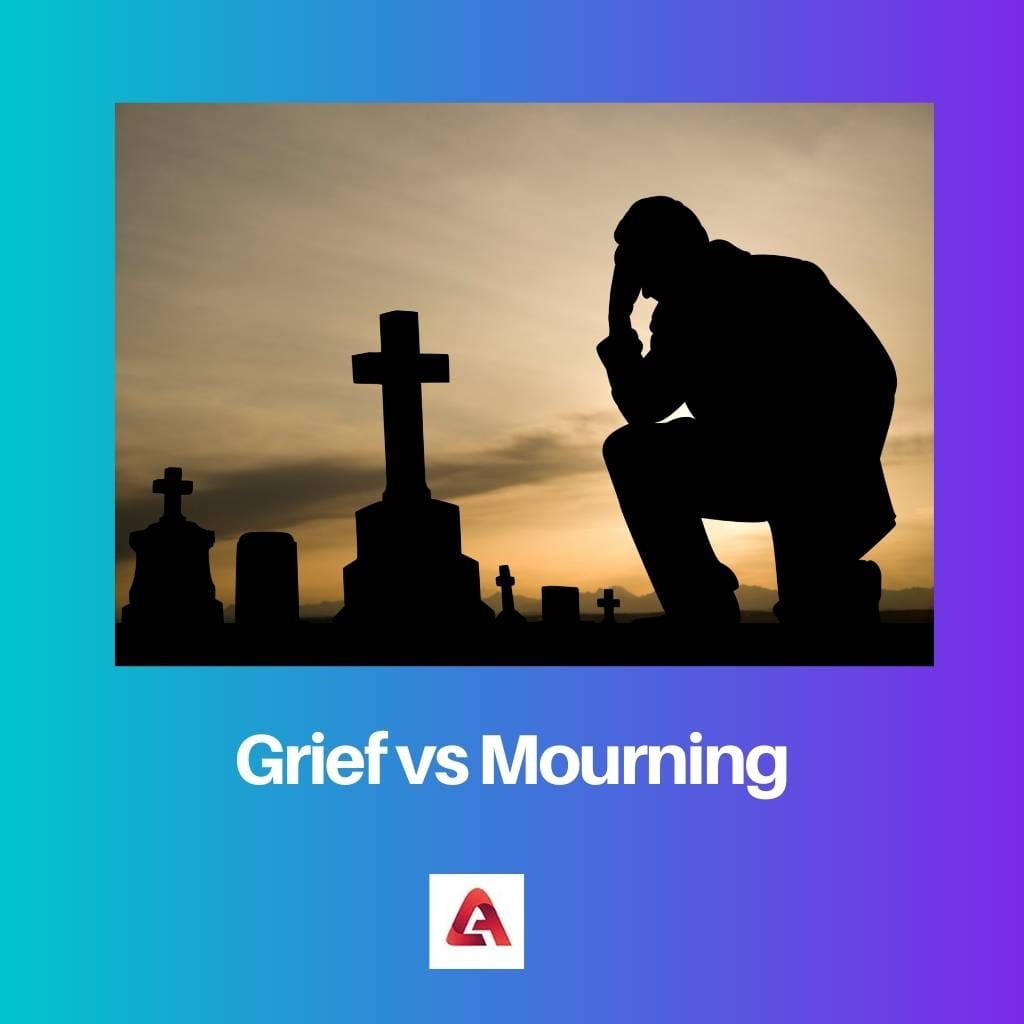A human loss due to death is the biggest loss any individual can ever feel. Therefore, it is believed that this affects the human most. Grief and mourning are two terms that are expressed with human loss.
Both of them are used interchangeably as they exist at the same time and mostly due to the same reason too.
Despite the similarity among them, they are different from each other. There is a boundary that is there.
To better understand both the process and how they are followed, a different article has all the information on both grief and mourning.
Key Takeaways
- Grief is an internal emotional experience in response to loss, while mourning represents the outward expression of grief.
- Grieving can be unpredictable and non-linear, whereas mourning follows cultural and social norms or rituals.
- Mourning provides a structured process to cope with loss, while grief is a personal journey that varies between individuals.
Grief vs Mourning
The difference between Grief and Mourning is the fact that grief is more of personal emotion that is not shared or seen by others, whereas Mourning is associated with more rituals that can be seen by others. Another difference can be that grief is common. Everyone can feel the pain of grief, whereas mourning rituals differ from place to place. Every religion follows different mourning rituals.

Grief is an emotion that is related to a loss. Mostly the loss is of something living. It can be an animal, plant, human, etc., and people used several measures to express their grief.
It is a natural emotion that cannot be controlled or stopped; it just happens due to the loss. The time period of grief depends from person to person. Everyone feels grief with the same pain of course.
It mainly depends upon the loss.
Mourning is a process of showing that you are grieving due to some loss (loss of life). It is a process when a person loses the loved one and wants to perform some rituals for their last rite.
It is shared by the other relatives and friends of the individual (who suffered the loss). Some people might take a month to overcome the loss, while some even take years to cope with the loss.
Comparison Table
| Parameters of Comparison | Grief | Mourning |
|---|---|---|
| State | It is natural. | It is more ritualistic. |
| Stage | First stage | Secondary stage |
| Lasting Period | For months | For years |
| Nature | More personal | More ritualistic |
| Types | There are no such types | Rituals may have types. |
What is Grief?
Grief is an emotion that can happen in phases. It can’t control. Therefore, you must know the stages.
All people experience these emotions differently and therefore respond to them in a different manner. Following are some of the stages of grief that some people may experience:
- Denial: Most people deny at first when they hear the type of loss. They feel shocked and numb. It can be helpful but for a temporary period.
- Anger: this is the common feeling or emotion a person can feel after getting the knowledge of the loss. A person might feel anger to the point that he starts breaking things or can also take it out on other people.
- Bargaining: in this stage, a person feels that he could have done something to prevent or change the situation.
- Depression: grief can sometimes change into depression when a person is thinking about the same thing for a longer duration and is unable to share his sadness with anyone else.
- Acceptance: this is considered to be the final stage where the person finally accepts the truth and tries to move on in life.
Grief should not be born alone but shared with the close one. Otherwise, it can really cause harm to the mental health of the individual.
And in case there is some serious symptom, professional help should be taken immediately.

What is Mourning?
Mourning is the after-stage of grief; it is a way of showing grief. Mourning is required for the following due reasons:
- Accepting the reality: it is done mainly for the purpose of accepting the loss the person has suffered by losing a loved one. It is important to accept reality and move forward with life.
- Feeling the pain: sometimes, people do not accept the loss. They deny that nothing has happened that can cause some relief for a small period, but for a longer duration feeling the pain is said to be a better way of dealing with the pain.
- Remembering the loss: it a required to finally remember the life they have lost with the rest of the loved ones.
- Allowing others to help: mourning is also a way of sharing the sadness and loss with their friends and relatives to feel more relieved and carry on with life.
Mourning can be done in several ways that depend upon the choice of the individual itself. Some may just feel it, while others perform rituals for the final rites of the person.

Main Differences Between Grief and Mourning
- Grief is an internal emotion; it is associated with feelings and thoughts. It cannot be seen or touched but only felt, whereas mourning is more associated with the external part when you express your grieving. It is seen in the form of rituals such as attending funerals or lamenting.
- Grief is a natural reaction that comes due to some loss or incidents, whereas mourning is considered ceremonies that are attached to the grieving. For example, some people wear particular mourning clothes to show that they are grieving.
- Grieving is the first process, as a person feels first and then expresses it. Without grieving, there is no mourning. Therefore mourning is a secondary process that sometimes overlaps the grieving.
- Grieving is relatively short-termed, whereas mourning is long-termed. Grieving lasts for a few months until the person overcomes the loss, whereas mourning takes years.
- Grieving is comparatively more personal as it is associated with the emotions and feelings of a human being. It is the lowest state of mind, while mourning is relatively more ritualistic. There are certain processes and rituals that have to be followed to express mourning.
- Grieving cannot be shared with others, as only you can feel your emotions, while mourning can be shared with others, friends and relatives share the presence of your mourning process.

- https://psycnet.apa.org/record/1993-97671-001
- https://www.sciencedirect.com/science/article/pii/S0272735800000623
- https://www.pep-web.org/document.php?id=IJP.042.0317A
- https://journals.sagepub.com/doi/abs/10.1177/000276402236676

Understanding grief and mourning is essential for anyone. This article does a great job in explaining these concepts and their emotional stages. It’s important to recognize these emotional processes to provide compassion and support for others who are grieving.
The article explains grief and mourning in a very comprehensive manner, highlighting the importance of professional help in case of serious symptoms. It’s crucial for individuals to recognize when they need assistance in dealing with grief and mourning.
This article is a valuable resource for understanding the emotional impact of loss. Recognizing the stages of grief and mourning is crucial to offering meaningful support to those who are grieving. Thank you for providing such detailed information on these topics.
The comparison table is particularly informative, clearly outlining the differences between grief and mourning. The stages of grief are also well-explained, providing valuable insights into how people experience and cope with loss.
The detailed descriptions of the stages of grief and mourning provide a clear understanding of the emotional processes one may experience after a loss. This article is an excellent resource for those seeking knowledge on how to cope with grief and mourning.
The comparison between grief and mourning is insightful, emphasizing the personal and ritualistic aspects of each. This article effectively explains the essential nature of these emotional responses and the need for support during these difficult times.
The detailed description of the stages of grief and mourning is enlightening, providing an insightful perspective on the emotional processes associated with loss. This article serves as a great tool for understanding these important aspects of human experience.
This article provides great insight into the differences between grief and mourning, helping us understand the emotional response to loss in depth. The description of the stages of grief is particularly helpful.
Excellent article about the difference between dealing with grief and mourning. It’s crucial to understand the difference between these two terms in order to provide the right support to those in need. Thank you for sharing!
This article excellently illustrates the importance of shared mourning after a loss, emphasizing the need for accepting reality and moving forward with life. It’s beneficial to understand the significance of these emotional processes.